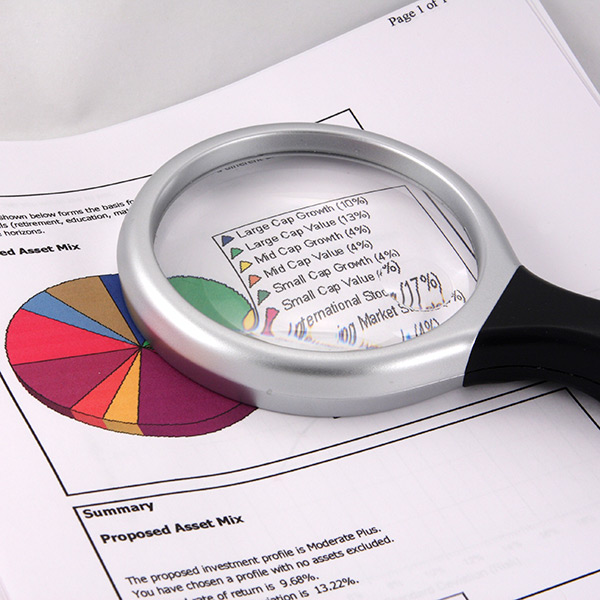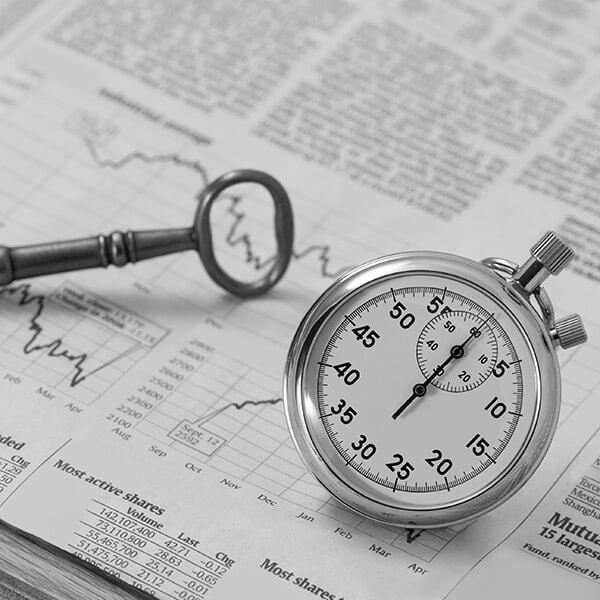The actively-managed mutual fund emerged on the investment scene in the 1940s as a way for investors to achieve diversification, to receive professional investment management services, and to enhance the liquidity of their stock portfolios. In exchange for these benefits, investment companies took a small percentage from investor holdings as the fee for investment management services. While these financial instruments may have been cutting-edge in the 20th century, in today’s investment environment, actively-managed funds are often considered fee-heavy, underperforming, and inefficient in terms of taxation.
Unfortunately, many individual investors still maintain large positions in actively-managed funds. Due to the heavy-fees assessed, mutual funds and stockbrokers have a direct disincentive to advise their clients on the downfalls of these investments. Thus, many investors continue to be unaware of the sub-optimal nature of these financial instruments.
The Real Cost of Owning a Mutual Fund
Mutual fund costs include investment management fees, administrative fees, and marketing fees (also known as 12b-1 fees). These fund expenses are usually presented as an expense ratio, which is simply the sum of these fees divided by the value of the holdings. For actively managed equity funds, investment management fees alone have historically ranged between 0.50% and 1.50% per year, with some closer to 2.00%. The expense ratio is driven even higher when including administrative and 12b-1 fees. In the large-cap growth category, the average expense ratio as of December 31, 2009, was 1.39%. The expenses are deducted at the investment-company level, and thus are reflected in the market value of the fund shares. Other fees not already included in the market value of the fund shares include broker commissions (also known as sales loads) and fund redemption fees.
Atlas considers these high fees to be absurd and unnecessary. As an alternative to the fee gouging of actively-managed funds, Atlas offers investors a more cost-effective, 1% per annum fee for investment management services. There are no sales loads, redemption fees, or undisclosed costs.
Assessing Investment Risk and Return
With just a rudimentary level of statistical knowledge, investors are often able to conduct sophisticated comparative analyses of investment alternatives on their own. When comparing investment alternatives, the first metric often to be considered is the Beta coefficient.
Beta attempts to explain a stock’s return relative to the returns of the broad market, often represented by the S&P 500 Index. The Beta coefficient is used to assess an investment’s correlation to the returns of the broader financial market. For example, investments with Betas of 1.0 should produce return volatilities equal to that of the S&P 500, in other words the stock has the same risk profile as the market and should produce returns similar to the market. A Beta coefficient of 1.5 will have price volatility 1.5 times that of the market. Correspondingly, the stock should outperform the market on the upside and have greater negative performance on the downside. A Beta score of .75 should have less risk than the market at large; the stock will rise and fall less than the market. Investors seeking to smooth out equity returns may choose investments with Beta scores on opposite ends of the spectrum.
An investment measure known as Alpha, which assesses investment returns in the context of their riskiness, is a common measurement used to determine the effectiveness of investment managers of actively-traded funds. How to calculate an Alpha score is not necessarily important for an investor to know. What is important is how to use these scores in assessing manager performance. Alpha quantifies investment returns that are not explained by Beta.
An Alpha score of zero indicates that the investment return was appropriate for the amount of risk taken. Alpha scores greater than zero indicate that returns exceeded the reward expected for the assumed risk. Alpha scores less than zero indicate that returns fell below the reward expected for the assumed risk. Thus, an informed investor would prefer to see Alpha scores greater than zero.
The Sharpe ratio is another statistic used to analyze investment returns in the context of the investment’s risk. The intricacies of the Sharpe ratio calculation may be beyond the interest level of most equity investors. What’s important to know is that the higher the Sharpe ratio, the better the investment has performed compared to the amount of risk assumed.
Each of these statistics, as well as a host of other data points, can be found at investment research company websites such as Morningstar. Atlas Capital Advisors takes all of these statistics, as well as investor goals and appetite for risk, into consideration when designing client portfolios.
The Folly of Fund Managers
While these statistics are important in investment planning, a more fundamental decision must be made by investors prior to plunging into a fund; should you pursue an active or passive investment management style?
The philosophical difference between these two approaches is centered on transaction activity. The active manager will transact (sometimes very frequently) following the mantra “buy low, sell high”. The passive manager will transact infrequently and essentially invest in the broad market, or “index”. The active manager believes that opportunities exist to find mispriced equities and to exploit market timing. The passive manager believes that equity markets accurately price securities thus rendering market timing a futile technique.
Over multiple time periods, the vast majority of active equity managers fail to beat their index benchmarks (which serves as a proxy for the passive management style). Ample market data exists to confirm the superiority of the passive management strategy. For example, the SPIVA (S&P’s Index vs. Active) mid-year scorecard for the 12 months ended June 30, 2009, reports that 76.69% of large-cap growth funds, 65.28% of mid-cap growth funds, and 60.66% of small-cap growth funds did not outperform their corresponding S&P 500 indices. Even over a 5-year period, the failure rate of actively-managed funds to exceed market indices is still abysmal (71.22% for large-cap, 75.88% for mid-cap, and 76.88% for small-cap funds).
The conclusion that can be derived from this data is that market timing (and actively picking winners and not losers) does not work. Passive investing, where a portfolio is constructed in an efficient manner to replicate an index’s return, is the answer. Passive investing may not be as exciting as the mythic stock broker yelling buy and sell instructions into a telephone, but it works.
While our philosophy clearly falls more on the passive side than the active style, we do have an investment discipline that does not induce us to simply “be long the market” or passively index. Atlas Capital Advisors helps each client to create a passive portfolio as the core of his or her investment strategy. For investors with greater risk appetites, additional, targeted portfolios can be developed to take advantage of other asset classes and investment strategies. For more discussion on our investing tenants, please visit other sections of our website, atlasca.com.
The Inconvenient Truth of Taxes
For those funds that turnover stocks like McDonald’s turns over employees, a tax issue may quickly arise. Selling an appreciated stock triggers a capital gain, while holding an appreciated stock does not. The higher the fund’s turnover ratio, the more frequently the fund is trading stocks, and thus potentially triggering gains. In 2009, the average turnover rate for the 25 top-performing large-cap growth funds was approximately 175%. These gains are triggered by the fund manager, and thus may appear on a year-end Form 1099 even though the investor has made no request to sell shares.
Short-term capital gains receive much less favorable capital gain treatment than long-term capital gains. Short-term capital gains (gains on assets held less than one year) are taxed at ordinary rates while long-term capital gains (gains on assets held more than one year) receive more favorable tax treatment. Unfortunately, actively-traded funds are most often guilty of spinning off short-term gains to investors which are then taxed at unfavorable rates.
An investment management style closer toa buy and hold strategy, on the other hand, can usually ensure that only long-term assets are sold, thus enabling the investor to take advantage of lower tax rates.
Taking a Smarter Approach
The weight of the historical evidence is clearly against actively traded funds in the equity markets. Actively-traded funds fail to achieve cost effectiveness, superior performance, and tax efficiency. So, the next stockbroker who pushes an actively-traded stock mutual fund as a great investment should indeed raise a big, bright red flag in the mind of the investor.
If you are fortunate enough to be facing these decisions and would like professional guidance and expert analysis, please contact Atlas Capital Advisors.











